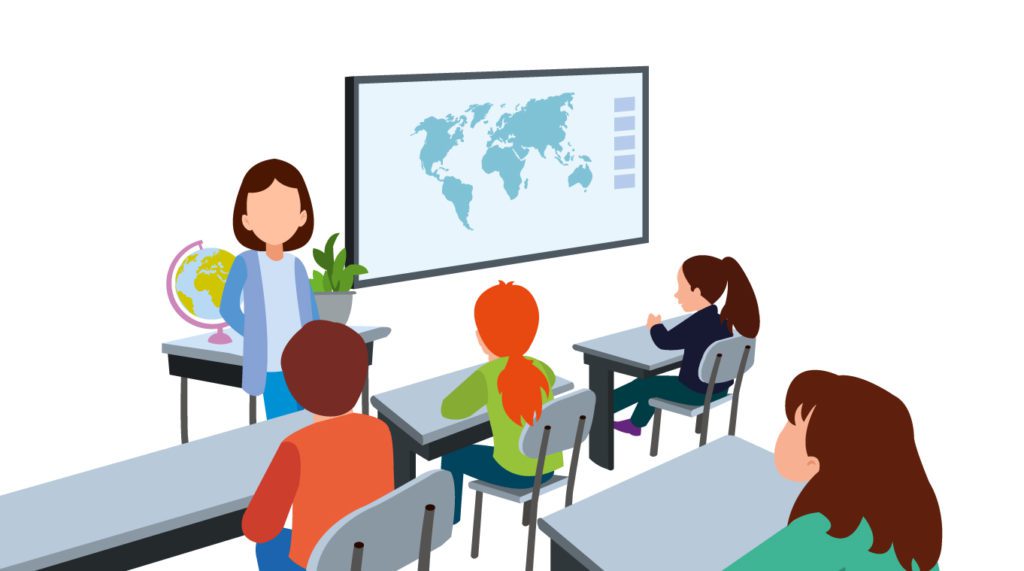Teachers always try to find one of the best solutions to help their students solve any problem, or guide them in the right way to complete a task. A teacher always acts as a support to their students and builds them in the right way to solve their students’ hurdles in the way to completing the tasks. Scaffolding strategies for teachers is another teaching method that involves providing students with the support they need to complete a task or learn a new concept. It is typically used to help students who are struggling to understand a subject or who are working on a particularly challenging task.
Many scaffolding strategies can be implemented in the classroom to help students succeed in their tasks. In this method, the teacher helps the students by finding new information or helping the students understand the way to solve the problem. There are many scaffolding strategies for teachers that can be used in the classroom.

Top 6 Reasons To Try Scaffolding Strategies for Teachers
- Scaffolding strategies are helpful in meeting the individual needs of every student.
- These strategies help to develop critical thinking and problem solving in students.
- They are used to support students as they work on complex projects and real-world applications.
- Students become more independent if teachers introduce these strategies in the classroom.
- Scaffolding can help teachers to assess student understanding in a more authentic and meaningful way.
- Scaffolding strategies are very helpful in building teamwork and it also improves communication between teachers and students.
Here Are Some Scaffolding Strategies In Education That Can Be Used In The Classroom
Differentiated Instruction
Differentiated instruction is one of the scaffolding strategies in which teachers adjust their instruction to meet the needs of individual students in their class. It is based on the premise that students learn in different ways and at different rates, and that by providing a range of options for how students can learn and demonstrate their learning, teachers can better meet the needs of all students.
Differentiated instruction can take many forms, but common scaffolding strategies for teachers include providing students with different ways to engage with content, offering a range of texts at different levels of difficulty, and using a variety of assessment methods to evaluate student learning.
Pre-teach Vocabulary
Pre-teaching vocabulary is a scaffolding strategy in education that involves introducing students to new or challenging words before they encounter them in a text or lesson. This can help students better understand and engage with the material. As they will have a foundation of knowledge about the words being used.
Pre-teaching vocabulary can be done through a variety of methods, such as displaying a list of words and their definitions for students to reference, providing a brief overview of the meanings of key terms, or engaging students in activities that help them understand the meanings of new words. Pre-teaching vocabulary can be particularly helpful for students who are English language learners or who may have difficulty with reading comprehension.
Modeling
Modeling is one of the scaffolding strategies for teachers that involves demonstrating to students how to complete a task or solve a problem. It is often used in conjunction with other scaffolding strategies, such as breaking a task down into smaller steps or providing support and guidance as students work. In this, the students observe how the teacher is performing the task and make notes out of it for their further help. It is really helpful for the students who are struggling to complete the task or need an example to fulfill the task. This scaffolding strategy is very helpful for students of any age.
Think Aloud
Think aloud is a scaffolding strategy that involves verbalizing one’s thought process as one solves a problem or completes a task. When using think-aloud, the teacher or student talks through their thought process, explaining the steps they are taking and the reasoning behind them. This can help students understand how to approach a problem and can make the process of solving it more transparent. Think-aloud can be especially helpful for students who are struggling with a concept or who need to see an example of how to complete a task before they can do it themselves.
If you are looking to grow your coaching business and struggling to find the best solution, Classplus is here to solve all your problems and help you grow your business 10X. To know more, talk to our experts.
Visual Aids
Visual aids are one of the best scaffolding strategies to use. This can be an effective scaffolding strategy, especially for students who learn best through visual means. Visual aids can include a wide range of materials, such as diagrams, charts, graphs, maps, drawings, and images. These materials can help students better understand and retain new information, as they provide a visual representation of the material being taught.
Visual aids can be especially helpful for students who are struggling with a concept or who have difficulty understanding abstract ideas. They can be used in a variety of subject areas and with students of all ages. Some examples of visual aids that might be used in a classroom setting include diagrams, charts, maps, graphs, and many more.
Practice Opportunities
Providing practice opportunities is another one of the important scaffolding strategies for teachers. When students are given the opportunity to practice what they have learned, they can solidify their understanding of new concepts and skills, and develop their proficiency in using them. There are a few different ways that practice opportunities can be provided by guided practice and other ways. It helps the students to learn and apply it in a safe and secure environment.
One way to provide practice opportunities is through simulated work environments. For example, a training program or apprenticeship might include a section where trainees work with mock scaffolding structures and equipment in a controlled setting. This allows them to practice building and dismantling scaffolding, as well as to learn proper safety procedures.
Give Feedback
Scaffolding is a teaching strategy that provides students with support and structure to help them learn new skills and concepts. Giving effective feedback is an important part of scaffolding. It helps students understand their progress and identify areas for improvement.
Feedback should be specific to the task or concept being learned and clearly explain what the student did well and what they need to work on. It should be provided as soon as possible after the task is completed so that students can use it to make improvements in their work rather than just focusing on the final product, feedback should also highlight the learning process and the strategies the student used to complete the task.
This can help the student to better understand their own learning and to identify areas for improvement. The feedback given by the teacher must have a positive tone and should be motivating for the student.
Encourage Questions
Encouraging questions is an important part of scaffolding. It helps students to actively engage with the material and to take ownership of their own learning. Teachers can model the questioning process by asking their own questions and then encouraging students to do the same. Formative assessment strategies, such as think-pair-share and exit tickets, can help to encourage students to ask questions. This will give an opportunity to students to reflect on their learning and ask more questions.
Prior Knowledge
Activating and building on a student’s prior knowledge is an important aspect of scaffolding. It helps students to make connections between what they already know and what they are learning. Always remember to assess students’ prior knowledge before beginning a new unit or lesson
This can be done through pre-assessments, formative assessments, or informal assessments such as class discussions or concept mapping. Revising the prior information before starting a new lesson helps students understand what they already know and what they are about to learn.
Responsibility
A student must always have a little bit of control over their learning. Release of responsibility is one of the most important scaffolding strategies. In this, the teachers can give responsibility to the students for some projects. Teachers can present them with better opportunities, and hence students can easily lead their learning.
For example, ask your students to choose a topic and create a presentation about how they want to make their classes more interactive and fun learning. Ask them to present the ways through practical demonstration. This will help them take control of their learning and hence they can take on further responsibilities for different projects
Final Thoughts
We have studied many teaching strategies and ways to make a classroom more interesting and fun to engage with. Scaffolding is one of the best teaching methods to help students in improving their academics along with their personality development. This approach requires a lot of effort but it is definitely fruitful in the end when you see the result.
Fascinating Reasons To Try Scaffolding Strategies for Teachers FAQs
A1. Scaffolding in teaching learning means adding support to the student in order to help them complete the task and achieve the desired results.
A2. Scaffolding is important to teachers because with the help of scaffolding strategies help teachers to guide the students with giving them the responsibility of their work. This helps to build great qualities in students.
A3. Three types of scaffolding teaching are sensory, graphic, and interactive.
A4. Characteristics of scaffolding are contingency, fading, and transfer of responsibility.
A5. The main factors of scaffolding are strength, stability as well rigidity of the structure. This helps in building the process.



